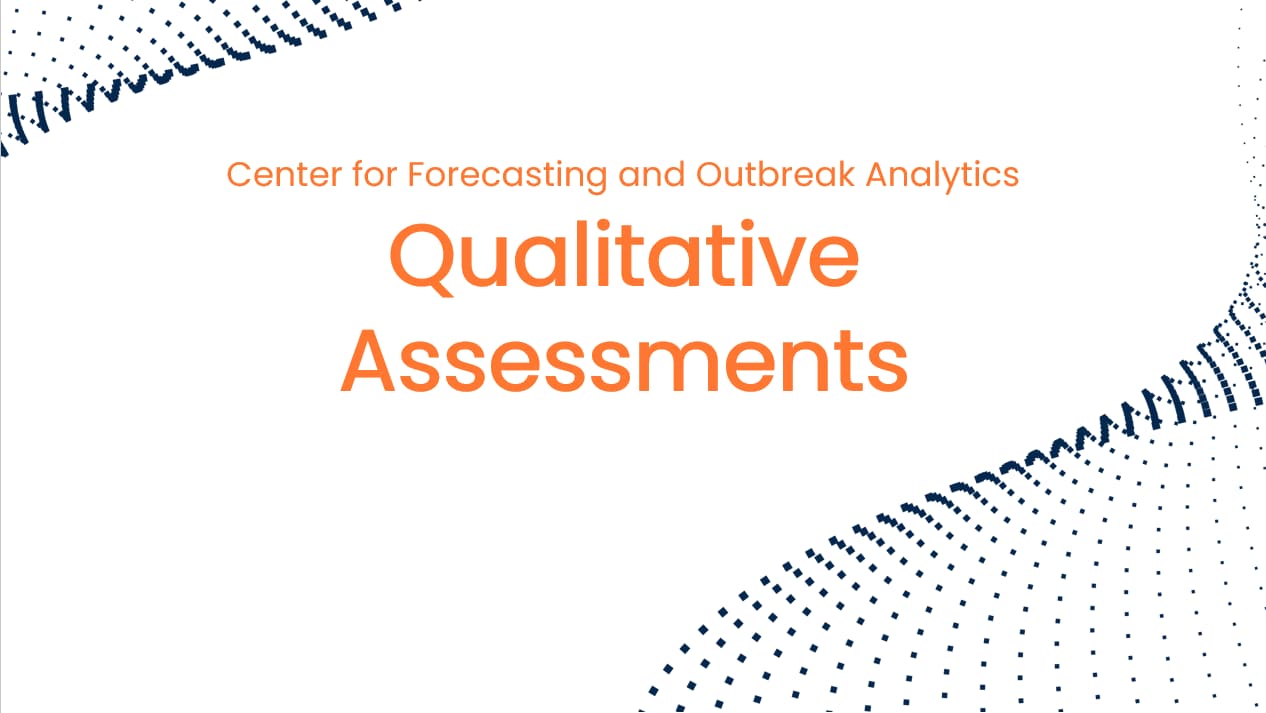Purpose
- CFA uses qualitative and quantitative risk assessment methods to support public health response and decision-making. For each assessment, we consider evidence underpinning risk, key uncertainties, and factors that could change the assessment.

Methods & Processes
Experts explain the methods, data and judgments behind CFA's rapid risk assessments.
To understand how CFA utilizes expert elicitation to help fill gaps in knowledge.
Our Assessments
Risk Assessments
To provide a background on risk assessments
Examine the risk to the US posed by Ethiopia's marburg virus outbreak.
Assessing the risk posed by the Ebola virus disease (EVD) in the DRC to the US
Risk to People in the United States from Highly Pathogenic Avian Influenza A(H5N1) Viruses
CDC’s marburg risk assessment examines the risk to the US posed by Rwanda’s marburg virus outbreak.
CDC assessed risk to the US posed by the clade I mpox outbreak in the DRC and neighboring countries
Assessing the low risk posed by the outbreak of Sudan virus disease (SVD) in Uganda to the US.
Outbreak Scenario Assessments
To provide background on scenario assessments
Outlining three plausible scenarios for the Ebola outbreak in the DRC over the next three months.
Outlining three plausible scenarios for the Ebola outbreak in Uganda over the next three months.
Seasonal Outlooks
Assisting public health decision-makers as they plan for and evaluate the respiratory virus season.
2025-2026 Seasonal Outlook
Using expert judgement, historical data, and scenario modeling to assess 2025-2026 season illnesses.
2024-2025 Seasonal Outlook
CFA's evaluation of the 2024-2025 seasonal outlook reviews our previous assessment.
CFA uses expert judgment, historical data, and modeling to assess seasonal respiratory disease.
CFA uses expert judgment, historical data, and modeling to assess seasonal respiratory disease.
CFA uses expert judgment, historical data, and scenario modeling to assess future illnesses.
Using expert judgement, historical data, and scenario modeling to assess 2024-2025 season illnesses.
2023-2024 Seasonal Outlook
CFA's evaluation of the 2023-2024 seasonal outlook reviews our previous assessment, compared to obse...
CDC’s Respiratory Disease Season Outlook assesses future U.S. respiratory illness activity.
Respiratory Disease Season Outlook (Previous Updates) shows past assessments
Content Source:
Center for Forecasting and Outbreak Analytics
